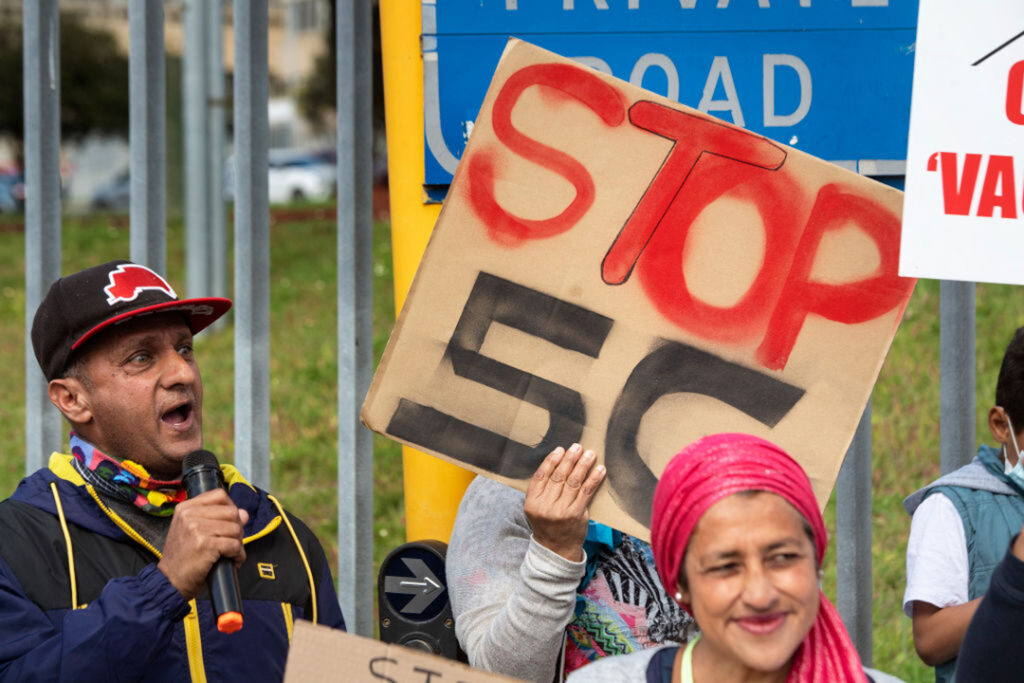ADF STAFF
Hundreds of years ago, innocent women in Europe were burned alive in witchcraft trials. The fuel for those fires came from conspiracy theories.
Today, a deadly pandemic continues to spread worldwide, and misinformation on social media is a key propellant for COVID-19’s persistence. Researchers are using history as a guide to fight back against this modern misinformation.
“Social media is a positive, neutral and negative force,” University of California-Berkeley Professor Tim Tangherlini told ADF. “It definitely gives people a great way to find others with similar interests, to organize and to stay in touch in this increasingly dispersed world. At the same time, as the events of the past year have shown us, it can be a locus for distortions and can be weaponized.”
In Africa, conspiracy theories about COVID-19 lead to doubts and fears about the disease, its origins, health care systems and government-mandated protective measures.
Simply put, misinformation is causing preventable deaths on the continent. But Tangherlini and a group of University of California-Los Angeles (UCLA) computer engineering researchers hope the artificial intelligence (AI) tool they’ve developed can help governments and health authorities combat dangerous misinformation.
Looking to tackle the reasons why false COVID-19 theories gain traction, the researchers mapped the connections that drive misinformation as a way to better understand and challenge it.
With narratives of Danish witchcraft folklore as a model, they used AI to analyze thousands of social media posts worldwide and identify key story elements and relationships that comprise conspiracy theories.
One name that kept appearing in COVID-19 conspiracies was Bill Gates, and the researchers soon found that his connection to computers and worldwide health care explained why conspiracy theorists connect the disease to 5G telecommunications networks and devices.
Tangherlini, who has a doctorate in folklore and Danish literature, said Gates makes a perfect subject for creators of false conspiracy theories.
“Bill Gates can easily be aligned in storytelling with a villain, such as a witch,” he said. “He’s vastly wealthy, so he is no longer really part of normal society. He uses technology, indeed controls technology, in ways that for most people are incomprehensible.”
Throughout history, technological advances have been met with fear and skepticism. In the search to understand the threat of COVID-19, conspiracy theories falsely claimed 5G radio signals spread the disease.
As 5G conspiracy theories spread on social media, incidents of arson and vandalism of telecommunications equipment increased around the world. Three cellular towers were destroyed near Durban, South Africa, in January 2021.
“It is regrettable that the much-needed network infrastructure is being destroyed,” then-Communications Minister Stella Ndabeni-Abrahams told reporters. “The burning of the cellphone towers follows a resurgence in conspiracy theories which link the emergence of the coronavirus pandemic to 5G.”
Tangherlini noted how 5G technology was launching at the same time COVID-19 was discovered.
“Through technology, Gates gets linked to the 5G conspiracy theories,” he said. “He has a global foundation that is in the news, particularly in Africa, for research to philanthropy to global health care.
“That might make people wonder, ‘Why is he doing this?’ Even if the expressed goals are utterly altruistic. The answer to this question gets even cloudier specifically in Africa. In the context of global colonial history, it is not surprising that this is perceived as a threat.”
Because many African nations have populations who express mistrust in their governments and health care systems, the researchers hope authorities can use their AI tool to identify who and what their communities perceive as threats, why and what, if anything, people are planning to do about it.
“Many of these can lead to actionable policymaking,” UCLA Professor Vwani Roychowdhury told ADF. “Protecting key infrastructure, for example. Doing public awareness campaigns. Alerting doctors and hospitals on what to expect and not to prescribe medicines like ivermectin and hydrochloroquine that would cause more harm than good.
“AI and its algorithms are necessary to boil down this giant cauldron of stories and events into bits and pieces of information nuggets for individual consumption.”

